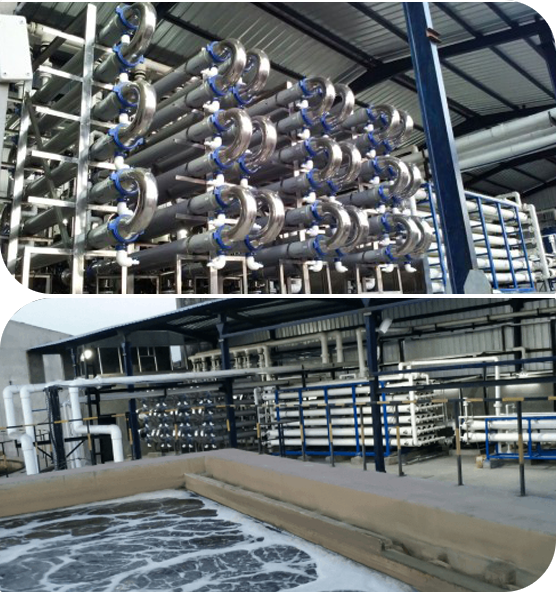
Waterman Engineers Australia is amongst the foremost producers of Zero Liquid Discharge technique. A ZLD procedure is a cure course of action which can be used to eliminate every one of the liquid squander from the procedure. The purpose of ZLD h2o cure is to lower wastewater economically and develop potable h2o that's healthy for regular use. Zero discharge method is a sophisticated procedure method that comprises ultrafiltration, reverse osmosis, evaporation and fractional electro deionization. And we've been a well-regarded supplier of ZLD programs.
In many Industries, including energy, oil & gasoline, chemical compounds, mining and Many others, a great deal of wastewater is generated that should be managed. Conventionally, this discharge of wastewater is finished through a plant outfall to some floor h2o body like an evaporation pond, or occasionally deep very well injected. These methods cause quite a few environmental issues by the general public in lots of regions of the earth, as h2o is really a scarce supply and its management really should be monitored. These considerations have resulted while in the establishment of ZLD processes by quite a few industries to reduce their environmental footprint and enrich sustainability. And, Waterman Engineers Australia are very best ZLD suppliers you can find for this system.
PROPERTIES OF ZERO LIQUID DISCHARGE Technique
The Attributes of the Zero Liquid Discharge procedure may vary depending upon the particular layout and technological know-how made use of. However, some frequent properties of ZLD systems consist of:
Water Conservation: One among the principal objectives of ZLD devices should be to conserve drinking water by minimizing the discharge of liquid squander into your atmosphere.
Significant Water Purity: ZLD programs are created to create high-good quality water that is definitely totally free from impurities and contaminants, that makes them suited to use in many industrial procedures.
Versatility: ZLD systems are often intended to accommodate a wide choice of enter liquid streams, that makes them adaptable and suitable for use in several industries.
Innovative Wastewater Procedure: Zero liquid discharge systems use Sophisticated wastewater remedy techniques to eliminate impurities and contaminants from your effluent, manufacturing high-quality h2o.
Waste Reduction: ZLD systems assistance decrease squander by decreasing the volume of liquid squander that should be disposed of and by developing a concentrated, solid waste materials that could be properly disposed of.
Vitality Effectiveness: ZLD units can be Vitality-intensive mainly because of the higher Vitality prerequisites of evaporation along with other wastewater procedure processes. On the other hand, innovations in know-how are making Zero liquid discharge techniques a lot more Strength-economical and value-efficient.
Waterman Engineers Australia manufactures Zero Liquid Discharge (ZLD) methods Zld System Manufacturer Zero Liquid Discharge System built to clear away all liquid waste, aiming to make potable drinking water and lessen environmental affect. Their ZLD units commonly include ultrafiltration, reverse osmosis, evaporation, and fractional electro deionization. Critical systems employed are Falling Movie Brine Concentrators, Pressured Circulation Crystallizer, and Other folks, that has a two-stage process of pre-focus and evaporation/crystallization to Recuperate and reuse h2o. These programs are adaptable to distinct industries, emphasizing h2o conservation, substantial water purity, squander reduction, and Power performance. Specialized specs are various and customizable, thinking of factors like h2o resource, flow amount, and feed drinking water high-quality.
The need for Zero Liquid Discharge (ZLD) units arises from the necessity to address environmental considerations relevant to h2o scarcity and air pollution. In industries like electricity, oil & fuel, and mining, large quantities of wastewater are created. Historically, this wastewater is discharged into bodies of drinking water, producing pollution and depleting thoroughly clean drinking water means. ZLD systems goal to minimize these impacts by managing and recycling wastewater inside of the economic process, thus conserving drinking water, cutting down squander, and promoting sustainability.
When contemplating the specialized requirements of the Zero Liquid Discharge (ZLD) process, essential elements to target include things like the h2o supply it can take care of, the procedure's move level, the standard of feed h2o, the phases of treatment method concerned, the recovery rate of h2o, solutions for focus disposal, resources of building, working circumstances, and system automation and control. These things ensure the program's usefulness, durability, and performance in dealing with and recycling industrial wastewater.
Zero Liquid Discharge (ZLD) plants present Added benefits which include water conservation, waste reduction, and pollution avoidance, contributing to environmental sustainability. They are relevant in industries like power generation, oil and fuel, substances, and mining, where by they assist in managing industrial wastewater correctly, minimizing the ecological footprint, and complying with strict environmental restrictions. These techniques are very important in regions going through water scarcity and for industries aiming to enhance their sustainability and operational performance.
FAQs for the Zero Liquid Discharge (ZLD) system typically deal with its operational ideas, Price tag-success, maintenance prerequisites, environmental influence, applicability across various industries, and regulatory compliance. These concerns aid consumers understand the process's Added benefits, technical calls for, and suitability for their specific wastewater management requirements.
one. Zero Liquid Discharge (ZLD) is actually a wastewater treatment approach created to eradicate all liquid waste.
2. The system's factors are motivated by the precise industrial course of action, wastewater composition, and regulatory demands.
three. Effluent treatment plants clear away pollutants from textile effluents to forestall environmental contamination.
4. Strengths involve h2o conservation, air pollution reduction, and regulatory compliance.
five. The goal is to reduce environmental effects by recycling water and lessening waste.
six-nine. Effluent treatment plants are phases in wastewater treatment: Principal (Actual physical separation), secondary (Organic treatment), and tertiary (Innovative cure).
10. Unit operations contain filtration, sedimentation, biological remedy, and disinfection.
11. Restricting parameters are factors that have an effect on the treatment method's effectiveness, like pH and contaminant concentration.
twelve. Structure criteria include things like stream fee, effluent composition, and sought after excellent of dealt with water.